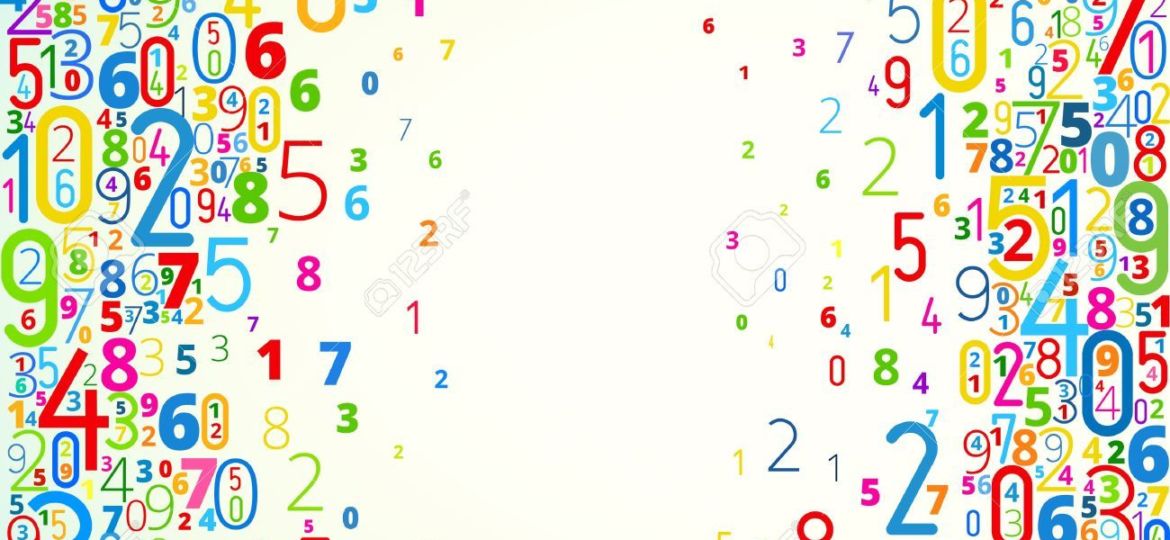
Numbers in English (Números em inglês)
There are two main types of numbers: Números em inglês
Cardinal Numbers – 1 (one), 2 (two) etc. (Used mainly for counting)
Ordinal Numbers – 1st (first), 2nd (second) etc. (Used mainly for putting things in a sequence)
Cardinal Numbers
Cardinal numbers are normally used when you: Números em inglês
Count things: I have two brothers. There are thirty-one days in January.
Give your age: I am thirty-three years old. My sister is twenty-seven years old.
Give your telephone number: Our phone number is two-six-three, three-eight-four-seven. (481-2240)
Give years: She was born in nineteen seventy-five (1975). America was discovered in fourteen ninety-two
Notice how we divide the year into two parts. This is the form for year up to 1999. For the year 2000 and on, we say two thousand (2000), two thousand and one (2001), two thousand and two (2002) etc.
Ordinal Numbers
You can normally create Ordinal numbers by adding -TH to the end of a Cardinal Number. Números em inglês
Ordinal numbers are normally used when you:
Give a date: My birthday is on the 27th of January. (Twenty-seventh of January)
Put things in a sequence or order: Liverpool came second in the football league last year.
Give the floor of a building: His office is on the tenth floor.
Have birthdays: He had a huge party for his twenty-first birthday.
Refer to centuries: Shakespeare was born in the 16th century.
For the name of a king or queen in written English, Roman numerals are used = Henry VIII
but in Spoken English you would say Henry the Eighth. Números em inglês
Cardinal Numbers
Listen to the pronunciation of the numbers from 1 to 100 in the following video: Números em inglês
Here is a list of cardinal numbers in English
1 – one
2 – two
3 – three
4 – four
5 – five
6 – six
7 – seven
8 – eight
9 – nine
10 – ten
11 – eleven
12 – twelve
13 – thirteen
14 – fourteen
15 – fifteen
16 – sixteen
17 – seventeen
18 – eighteen
19 – nineteen
20 – twenty
21 – twenty-one
22 – twenty-two
23 – twenty-three
30 – thirty
40 – forty
50 – fifty
60 – sixty
70 – seventy
80 – eighty
90 – ninety
100 – one hundred*
101 – one hundred and one
200 – two hundred
300 – three hundred
1000 – one thousand
1,000,000 – one million
10,000,000 – ten million
* Instead of saying One Hundred, you can say A hundred.
e.g. (127) one hundred and twenty-seven OR (127) a hundred and twenty-seven.
The same rule applies for one thousand (a thousand) and one million (a million)
Notice that you need to use a hyphen (-) when you write the numbers between 21 and 99.
With long numbers, we usually divide them into groups of three which are divided by a comma. e.g. 5000000 (5 million) is normally written as 5,000,000
Ordinal Numbers
1st – first
2nd – second
3rd – third
4th – fourth
5th – fifth
6th – sixth
7th – seventh
8th – eighth
9th – ninth
10th – tenth
11th – eleventh
12th – twelfth
13th – thirteenth
14th – fourteenth
15th – fifteenth
16th – sixteenth
17th – seventeenth
18th – eighteenth
19th – nineteenth
20th – twentieth
21st – twenty-first
22nd – twenty-second
23rd – twenty-third
30th – thirtieth
40th – fortieth
50th – fiftieth
60th – sixtieth
70th – seventieth
80th – eightieth
90th – ninetieth
100th – hundredth
101st – hundred and first
200th – two hundredth
300th – three hundredth
1,000th – thousandth
1,000,000th – ten millionth

Ordinal numbers in English and their uses.
Version of this chart for Parents and Teachers (Each purchase helps us to create more free ESL material)
The Number 0
We normally say ‘zero’ for the number ‘0’.
BUT when we give our telephone number, we often say O like the name of the letter O.
e.g. 505-1023 = five-O-five, one-O-two-three
Fractions and Decimals
We use ordinal numbers (at the end position) to talk about fractions.
1/2 – a half
1/3 – a third
2/3 – two thirds
1/4 – a quarter (a fourth)
3/4 – three quarters (three fourths)
1/5 – a fifth
2/5 – two fifths
1/6 – a sixth
5/6 – five sixths
1/7 – a seventh
1/8 – an eighth
1/10 – a tenth
7/10 – seven tenths
1/20 – a twentieth
47/100 – forty-seven hundredths
1/100 – a hundredth
1/1,000 – a thousandth
Notice that for 1/4, you can say a quarter OR a fourth.
IF we have a whole number with a fraction, we use the word AND between the two parts.
e.g. 2 3/5 = two and a three-fifths
For parts of whole numbers, we use a decimal point (and NOT a comma).
e.g. 2 1/2 (two and a half) = 2.5 (two point five)
If there is more than one number after the decimal point, we say each number individually.
e.g. 3,456.789 = three thousand, four hundred and fifty-six point seven eight nine.
The exception to this rule is when we are talking about dollars and cents (or pound and pence)
e.g. $21.95 = twenty-one dollars, ninety-five (cents). Saying the word cents at the end is optional.
Fonte: https://www.vocabulary.cl















